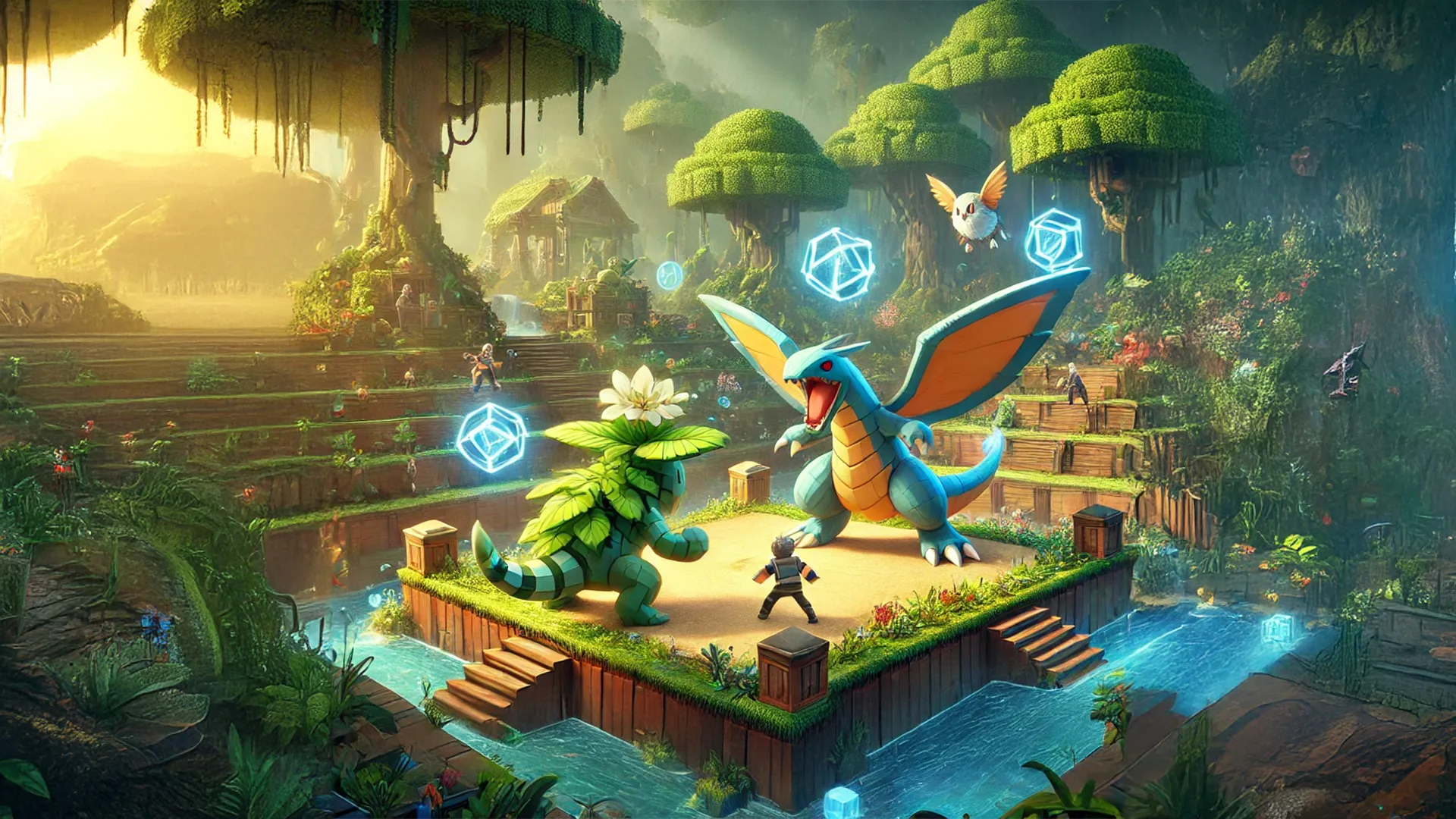In Cobblemon battles, understanding the nuances of status effects, types, and move combos can be the key to securing victories. While catching and training your favorite Cobblemon is crucial, knowing how to effectively utilize these advanced strategies will give you an edge in multiplayer battles and tough single-player encounters. This guide will break down everything you need to know to master the battle mechanics in Cobblemon and give you a solid foundation to build a championship-winning team.
The Power of Status Effects: Turning the Tide of Battle
Status effects play a massive role in Cobblemon battles, adding complexity that goes far beyond dealing damage. Properly utilizing status effects can disrupt your opponent's strategy, slow down their team, and even give you the breathing room you need to set up a winning move.
Key Status Effects and Their Impact:
- Paralysis: This status effect is incredibly versatile, as it not only lowers the target's speed but also introduces a 25% chance of the affected Cobblemon being unable to move. Moves like Thunder Wave are great for incapacitating faster opponents and tipping the battle in your favor.
- Burn: One of the best ways to cripple physical attackers, the burn status deals damage over time while halving the physical attack stat of the afflicted Cobblemon. Moves like Will-O-Wisp are essential in battles against heavy hitters like Fighting or Rock-types, who rely on physical moves to deal damage.
- Poison and Toxic: Poison works slowly but surely to whittle down your opponent's HP. Toxic, however, ramps up the damage every turn, making it a deadly tool in longer battles. Poison is ideal for defensive strategies where you plan to outlast your opponent while they slowly succumb to the effects of Toxic.
- Sleep: Perhaps one of the most disruptive status effects, sleep renders the opposing Cobblemon completely helpless for a few turns. Moves like Hypnosis or Spore are perfect for shutting down key threats and giving you time to set up with stat-boosting moves or launch powerful attacks.
- Freeze: Freeze is a rare but devastating status effect. Frozen Cobblemon cannot move until they thaw, and the freeze status can persist for several turns, offering a huge advantage. Ice-type moves like Ice Beam have a small chance of inflicting freeze, and while it’s unreliable, when it works, it can completely turn a battle around.
- Confusion: Confusion introduces a risk that the affected Cobblemon may hurt itself when it tries to attack. Moves like Confuse Ray can be used to add chaos to the battlefield and force your opponent into risky decisions. Confusion pairs well with status effects like paralysis to lock down opponents and prevent them from acting.
Understanding Cobblemon Types: Offensive and Defensive Strategies
The type system in Cobblemon is one of the most critical aspects of battle strategy. Each Cobblemon and move is tied to a specific type, such as Fire, Water, Grass, or Electric. Knowing these types and their interactions is essential to planning your offensive and defensive maneuvers.
Offensive Type Matchups:
- Fire > Grass, Bug, Ice, Steel
- Water > Fire, Ground, Rock
- Electric > Water, Flying
- Grass > Water, Ground, Rock
- Ice > Grass, Ground, Flying, Dragon
By leveraging these matchups, you can maximize your damage output. For example, sending out a Fire-type Cobblemon like Flareon against a Grass-type Cobblemon such as Leafeon will grant you a significant damage boost due to the type advantage. However, it’s equally important to understand defensive type matchups to minimize damage taken. For instance, if you’re facing a Fire-type, avoid sending in a Grass-type Cobblemon, as it will take super effective damage.
Defensive Type Resistances:
- Fire resists Fire, Grass, Ice, Bug, Steel, Fairy
- Water resists Fire, Water, Ice, Steel
- Electric resists Electric, Flying, Steel
- Grass resists Water, Grass, Electric, Ground
- Dragon resists Fire, Water, Grass, Electric
Resistances play an equally important role in your team’s defense. When you know what type your opponent’s Cobblemon is, switching to a Cobblemon that resists their moves can help you absorb damage and reset the battle. This strategic switching can save your team from unnecessary knockouts and help you regain control of the match.
Crafting the Perfect Move Combos: Synergizing Status and Power
One of the most advanced strategies in Cobblemon battles is using move combos to enhance your effectiveness in battle. These combos often involve status moves, stat-boosting moves, and powerful attacking moves to create synergy between your Cobblemon’s abilities.
Popular Move Combos:
- Paralysis + Hex: Paralysis is one of the most effective status effects due to its speed-reducing properties. When combined with a Ghost-type move like Hex, which deals double damage to status-affected Cobblemon, you can quickly dispatch slower threats.
- Toxic + Protect: One of the oldest and most reliable strategies in Cobblemon battles, using Toxic to poison your opponent, followed by Protect to stall out turns and deal passive poison damage, is especially useful for defensive Cobblemon with high HP and good sustain.
- Rain Dance + Thunder: Normally, Thunder has a 70% accuracy, but when combined with Rain Dance, it gains 100% accuracy. Not only does this make Thunder more reliable, but the rain also boosts the power of Water-type moves, providing additional synergy for teams built around rain effects.
- Sunny Day + Solar Beam: Solar Beam typically requires a turn to charge, but when Sunny Day is active, it can be fired instantly. This is a devastating combo for Grass-type Cobblemon that can take advantage of the sun to launch powerful attacks without delay.
- Stealth Rock + Dragon Tail: Setting up Stealth Rock forces the opponent to take damage every time they switch in a new Cobblemon. Using a move like Dragon Tail can force your opponent to switch out, maximizing the chip damage from Stealth Rock while also dealing damage.
Combining these moves effectively can put pressure on your opponent and create opportunities to gain the upper hand. Understanding how to pair status effects with high-damage moves is essential for outsmarting your opponent and controlling the pace of the battle.
Building a Well-Balanced Cobblemon Team
Crafting a well-balanced team is essential to succeeding in Cobblemon battles, particularly in multiplayer matches where opponents will use diverse tactics. A balanced team includes Cobblemon with varying roles, such as offensive powerhouses, defensive tanks, and supportive status-inflicting Cobblemon.
Key Team Roles:
- Sweeper: These Cobblemon have high speed and attack stats, allowing them to quickly take out opponents. Moves like Swords Dance or Nasty Plot can help boost their stats further, making them even deadlier. Examples of strong sweepers include Electric, Fire, and Fighting-type Cobblemon with access to powerful moves like Thunderbolt or Flare Blitz.
- Tank: Tanks have high defense or HP, making them difficult to knock out. These Cobblemon often rely on moves like Recover, Leech Seed, or Substitute to outlast their opponents. Tanks are essential for stalling battles and absorbing damage while wearing down the opponent’s team with status effects.
- Support: Support Cobblemon are focused on setting up hazards like Stealth Rock or Spikes, using status moves like Toxic or Will-O-Wisp, and providing utility to the team. Support Cobblemon might not deal a lot of direct damage, but they play a crucial role in disrupting the opponent’s strategy and setting the stage for your sweepers.
By combining sweepers, tanks, and support Cobblemon, you can create a versatile team capable of handling a wide range of situations. Always consider how status effects, type matchups, and move combos can work together to enhance your team’s effectiveness in battle.
Conclusion: Mastering the Art of Cobblemon Battles
Mastering status effects, type advantages, and move combos is crucial for dominating Cobblemon battles. These elements form the backbone of any successful strategy, whether you’re facing off against powerful AI opponents or competing in multiplayer battles. By learning to exploit status effects like paralysis and burn, leveraging type advantages to maximize damage, and crafting well-thought-out move combinations, you can elevate your Cobblemon battling skills to new heights.
With careful planning, attention to detail, and mastery of these strategies, you’ll be able to craft a powerful and well-balanced team capable of overcoming any challenge that comes your way. Start experimenting with different Cobblemon, try out various strategies, and fine-tune your approach to become a true Cobblemon battle master.



